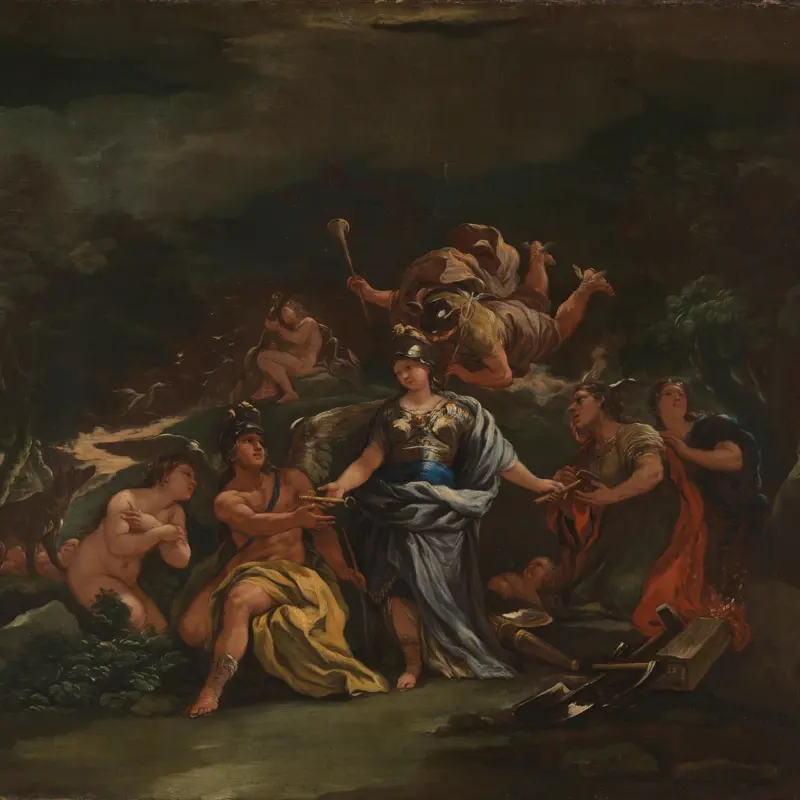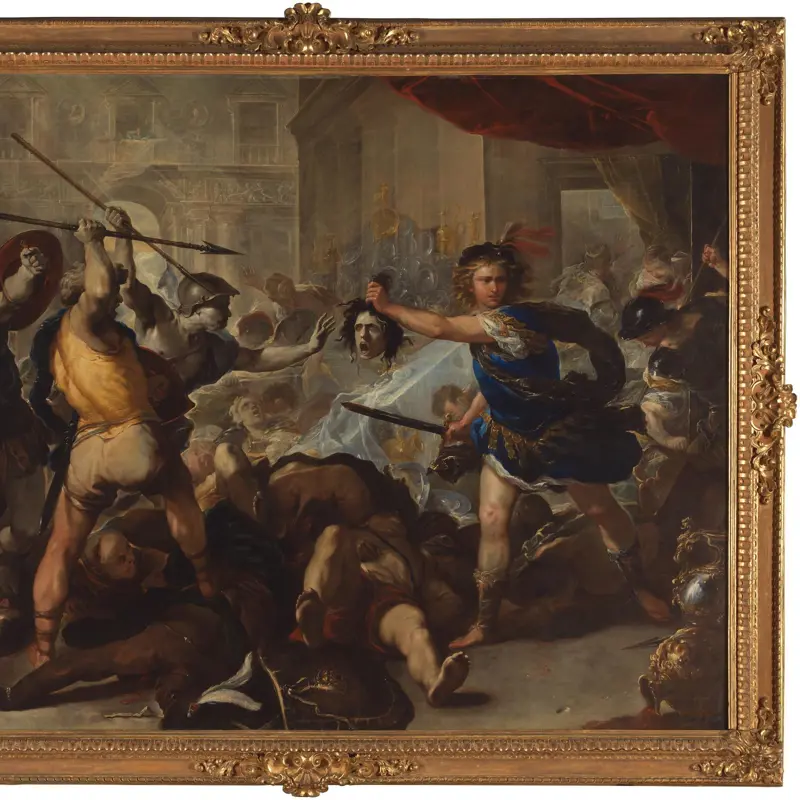Style of Luca Giordano, 'The Toilet of Bathsheba', after 1705
About the work
Overview
This is a scene from a story in the Old Testament. The naked woman is Bathsheba. She has just finished bathing, unaware that she has been spotted by King David, who is standing on the roof of his palace at the top right of the picture. According to the Bible, David was so besotted with Bathsheba’s beauty that he seduced her and then ordered her husband Uriah into the forefront of a battle. Uriah was soon killed, and David proceeded to take Bathsheba as his wife.
As an unwitting temptress, Bathsheba was a popular figure in art history. Her story provided a good excuse to make pictures like this, which – thinly disguised as a religious painting – depicts a voluptuous nude in an unguarded moment. Although the style is reminiscent of Giordano, it is more likely to be by an imitator working after his death.
Key facts
Details
- Full title
- The Toilet of Bathsheba
- Artist
- Style of Luca Giordano
- Artist dates
- 1634 - 1705
- Date made
- after 1705
- Medium and support
- oil on canvas
- Dimensions
- 50.1 × 63.4 cm
- Acquisition credit
- Sir Claude Phillips Bequest, 1924
- Inventory number
- NG4035
- Location
- Not on display
- Collection
- Main Collection
Provenance
Additional information
Text extracted from the ‘Provenance’ section of the catalogue entry in Michael Levey, ‘National Gallery Catalogues: The Seventeenth and Eighteenth Century Italian Schools’, London 1986; for further information, see the full catalogue entry.
Bibliography
-
1986Levey, Michael, National Gallery Catalogues: The Seventeenth and Eighteenth Century Italian Schools, London 1986
-
2001
C. Baker and T. Henry, The National Gallery: Complete Illustrated Catalogue, London 2001
About this record
If you know more about this work or have spotted an error, please contact us. Please note that exhibition histories are listed from 2009 onwards. Bibliographies may not be complete; more comprehensive information is available in the National Gallery Library.














